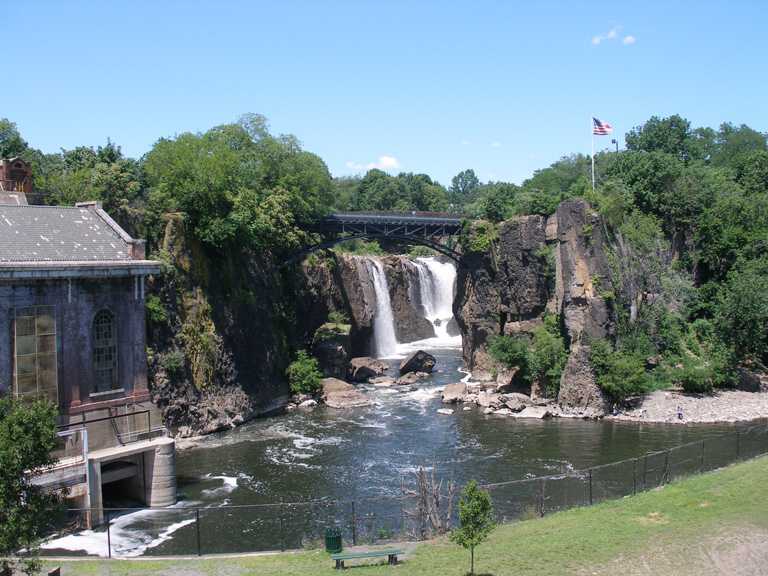|
The Great Falls of Paterson
Cultural Center Curator Glen Hutton, aided by Northeast Beekeepers Association President Tom Fuscaldo, led a walking tour after lunch. Attendees learned that the Great Falls or Paterson Falls is actually the Passaic Falls named for the river that flows over the falls. The word Passaic is derived from the Lenni-Lenape native American tribe word "Pashaywick", which means a place where the river splits rocks. The city of Paterson was called "Haquequemonck", a place in a rapid where fish are taken with a brush net. Later, when the Dutch settlers arrived in the 1600's, Paterson was called Aquackanmonck, and it became famous for the view overlooking the falls. The falls area remained undeveloped until after 1776 because the British prevented American industry from competing with England.
After the revolution, The Society for the Establishment of Useful Manufacture (SUM) was organized with the help of Alexander Hamilton and New Jersey's second governor, William Paterson. In 1792 the village of Aquackanmonck was renamed Paterson. With government help SUM developed the hydraulic power of the falls. Paterson became the "cradle of American Industry" and helped America become the world's leading industrial country. In 1914 SUM built a 4,849-kilowatt hydroelectric plant that was restored and recommissioned in 1986 with an installed capacity of 10,950 kilowatts. Local beekeeper William Dipillo is head operator of the plant. Paterson produced paper, cotton, silk, guns, submarines and many other industries including the locomotive industry that helped unite our east and west coasts and build the Panama canal.
(Photo
by Karl Shoenknecht)
|

